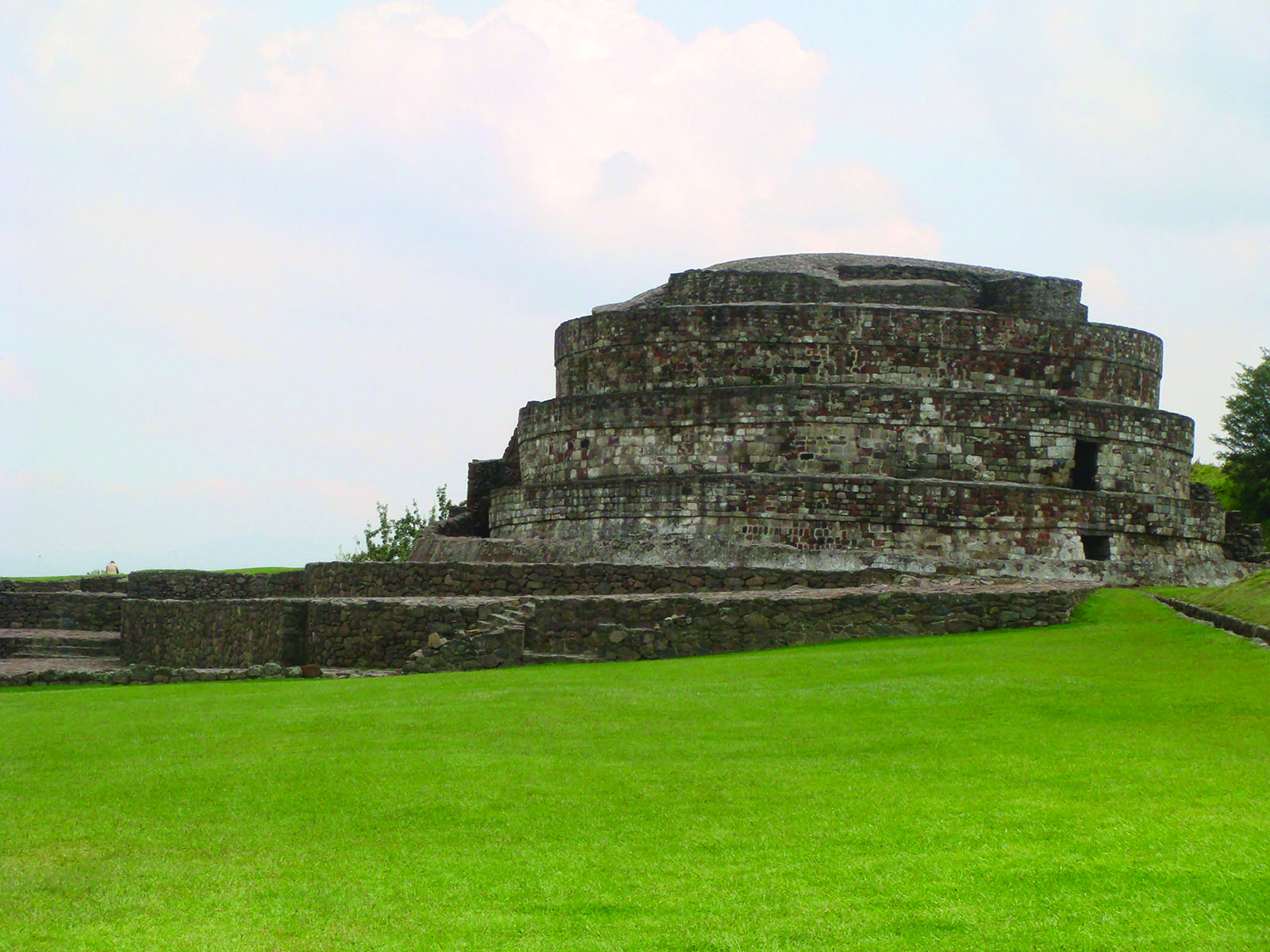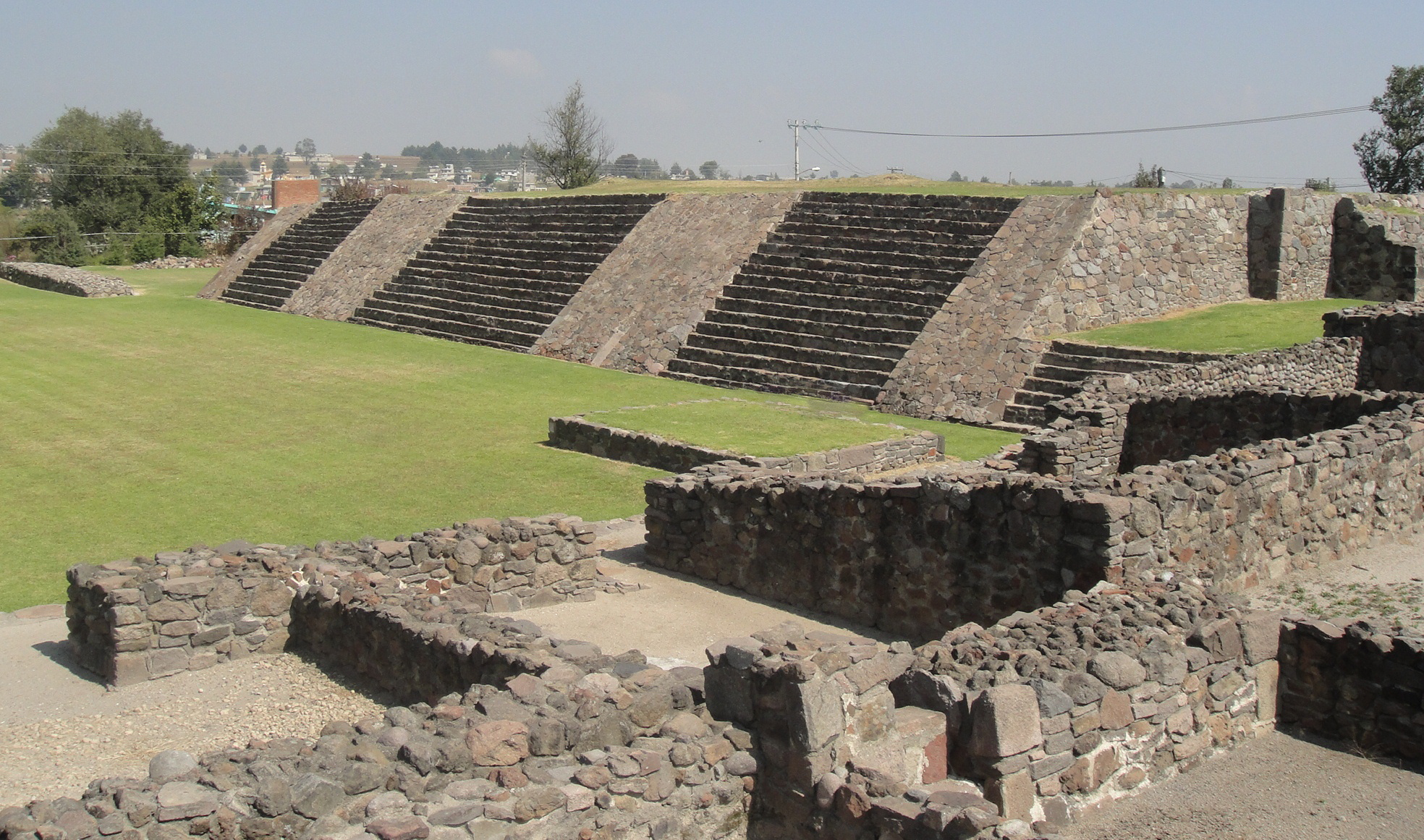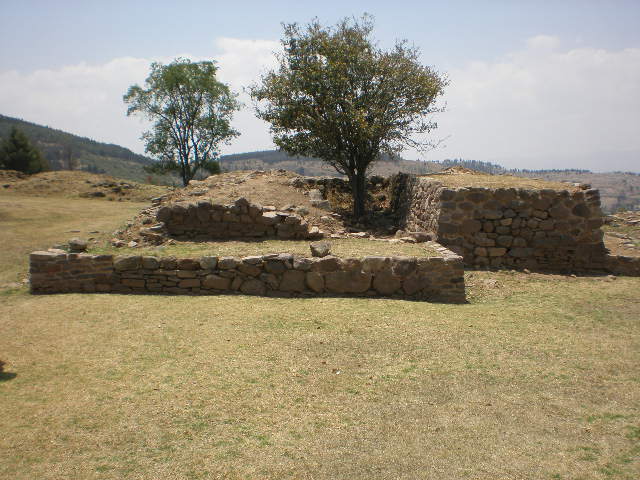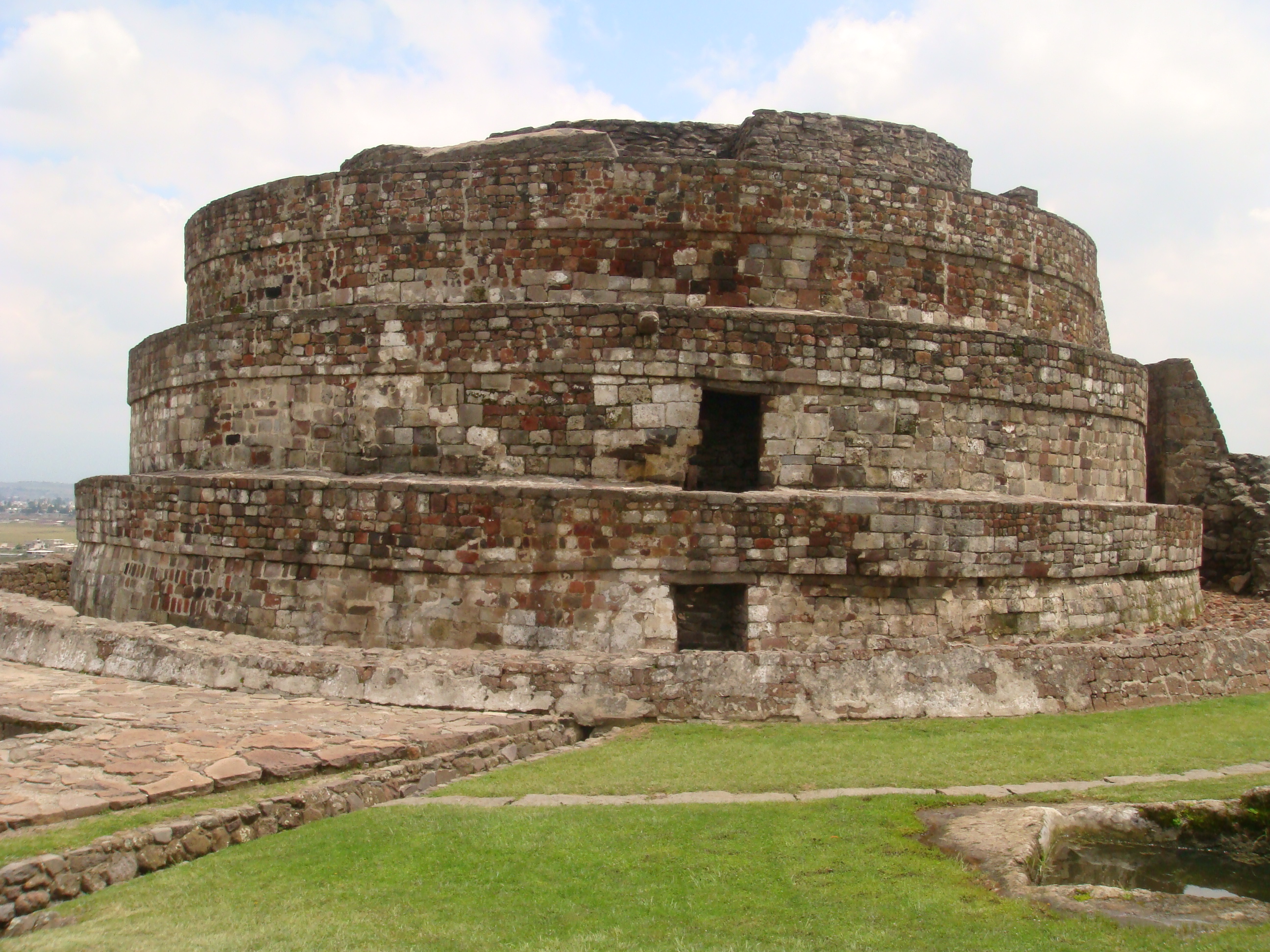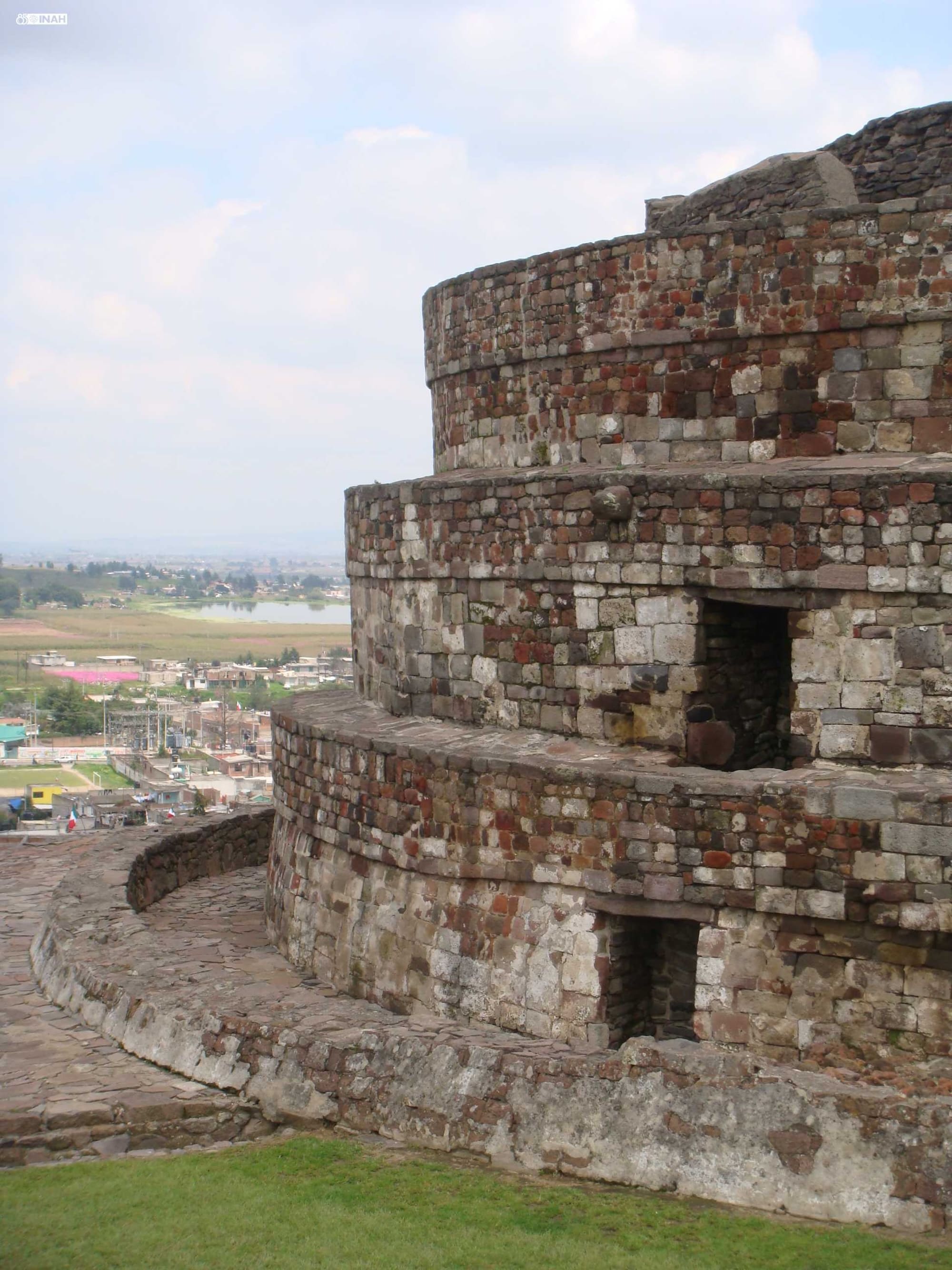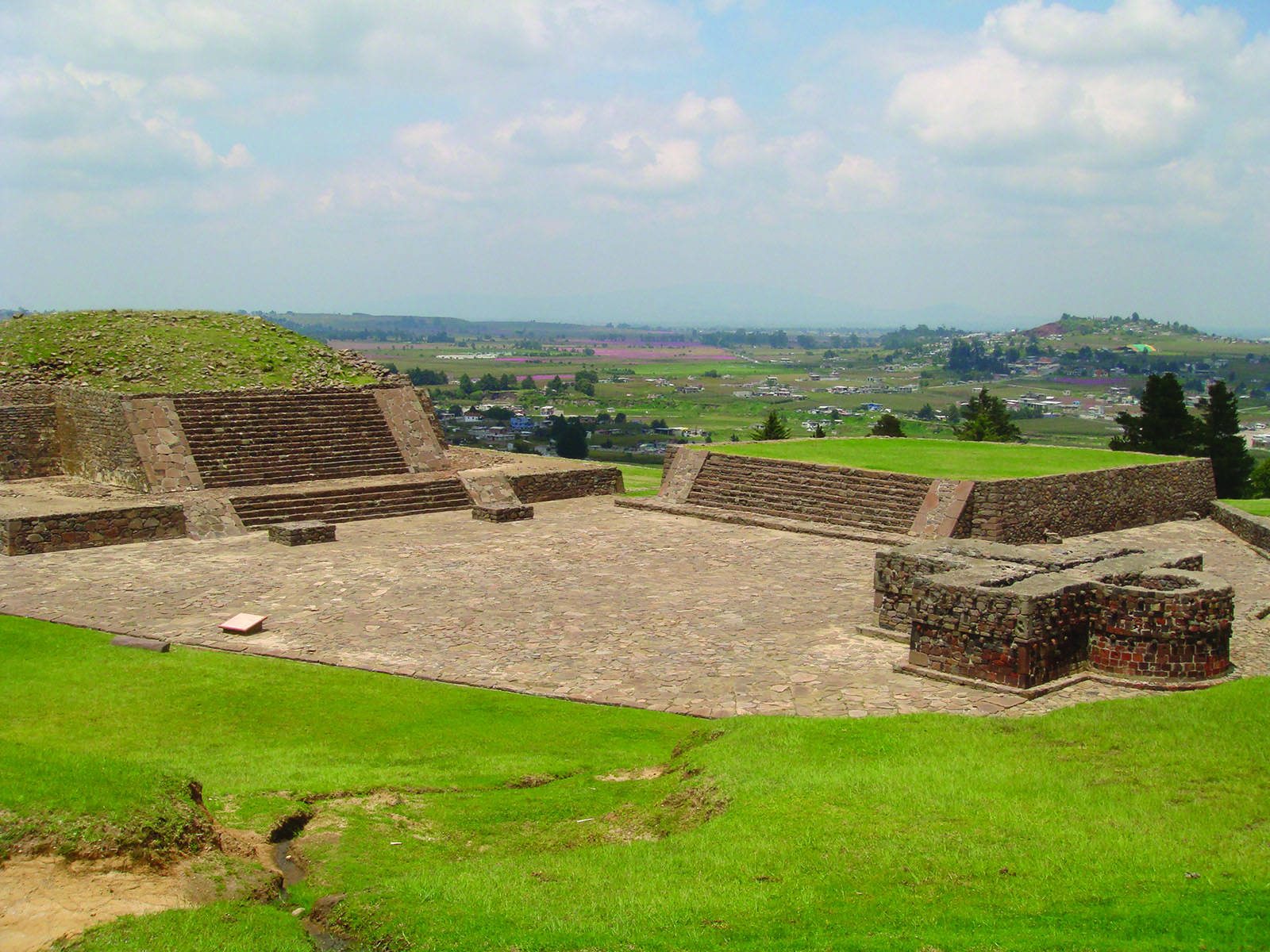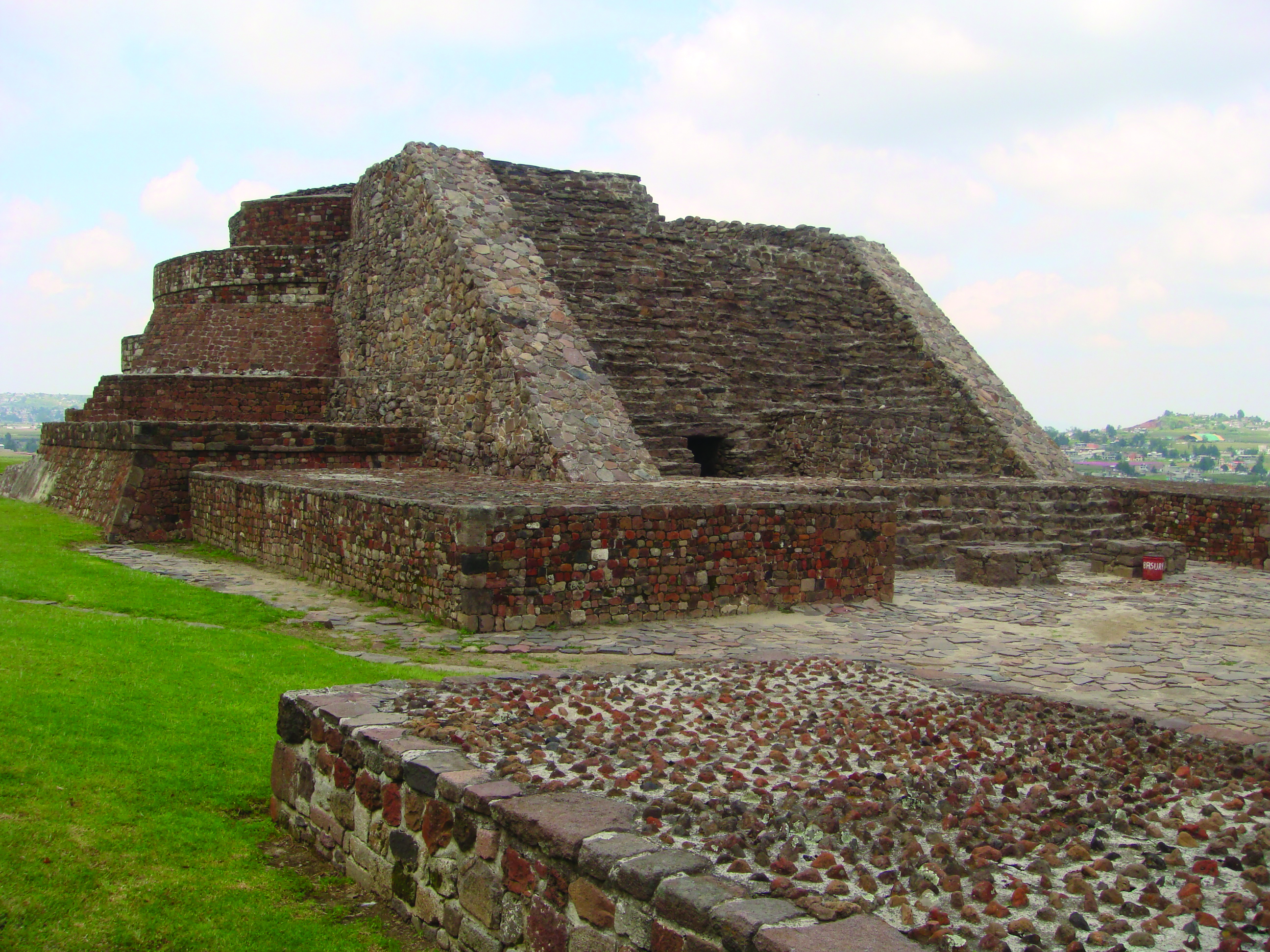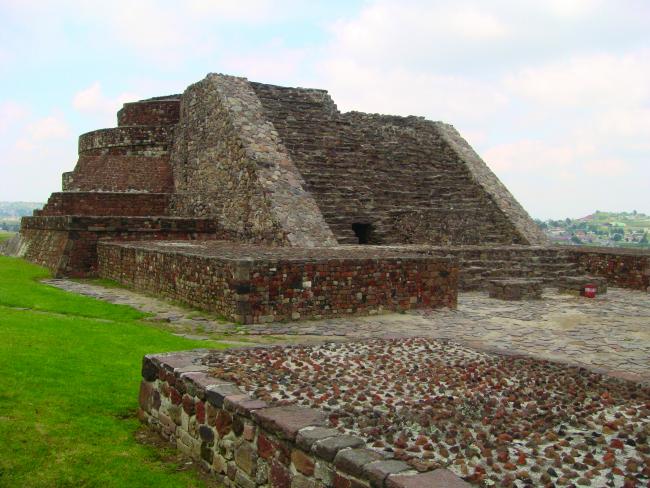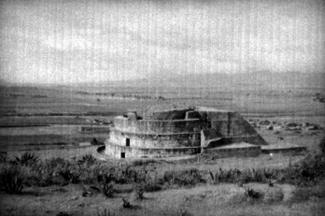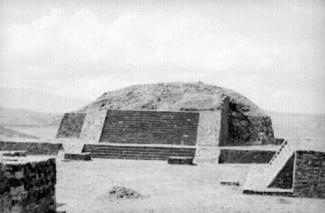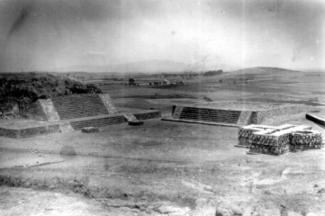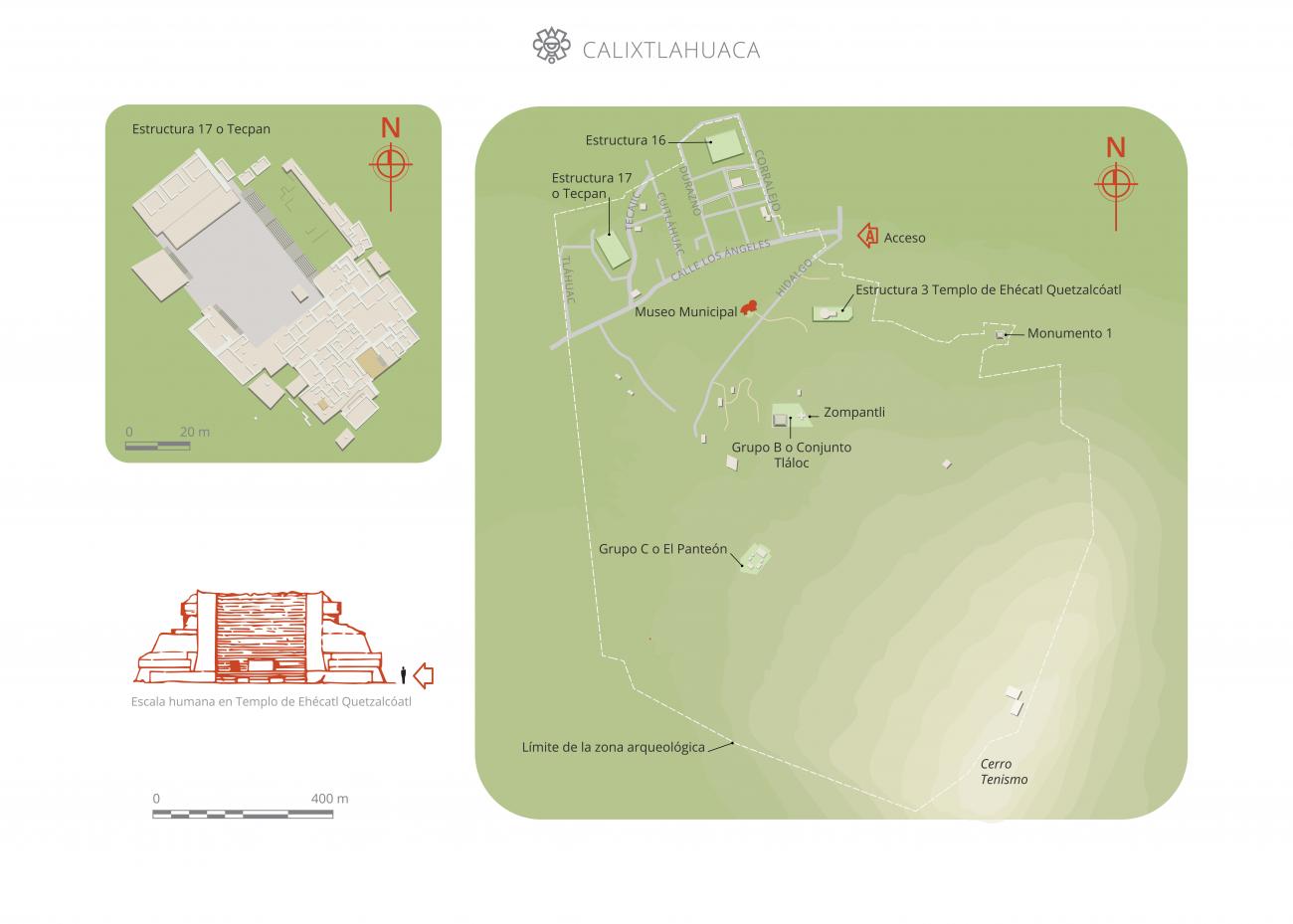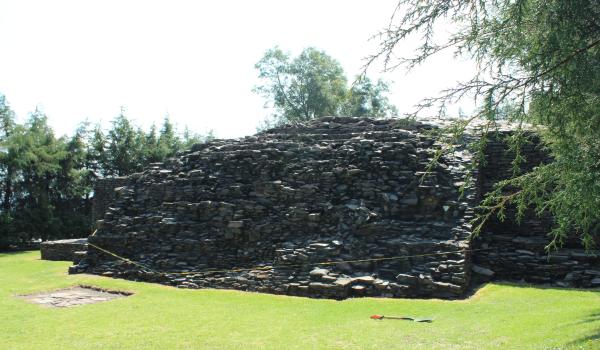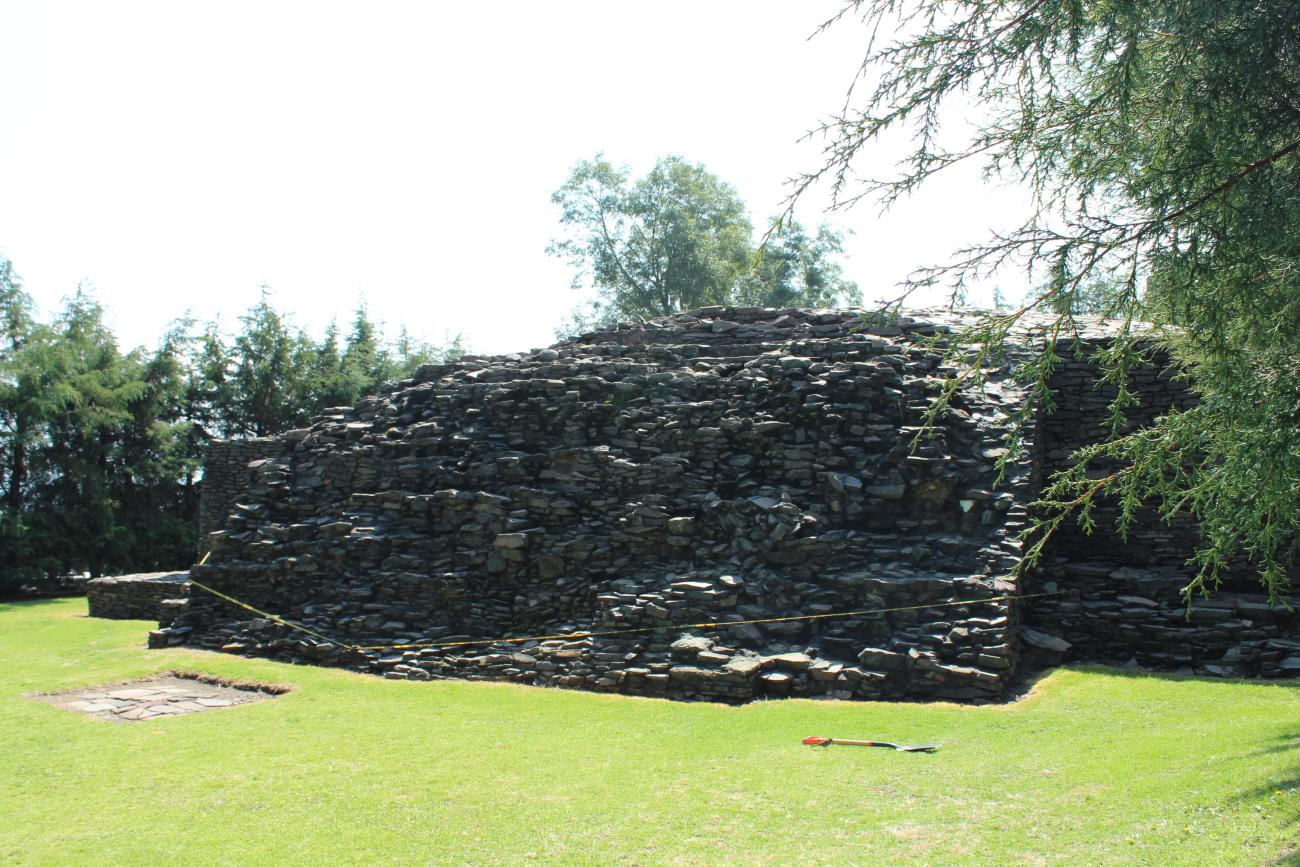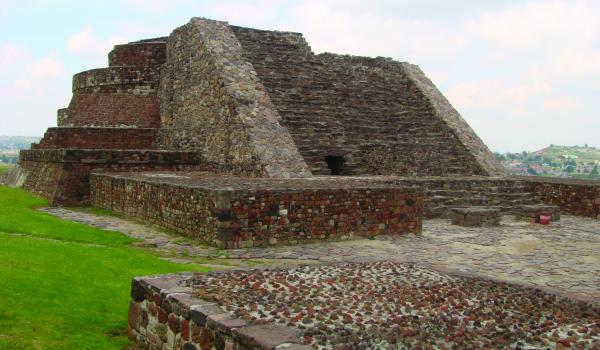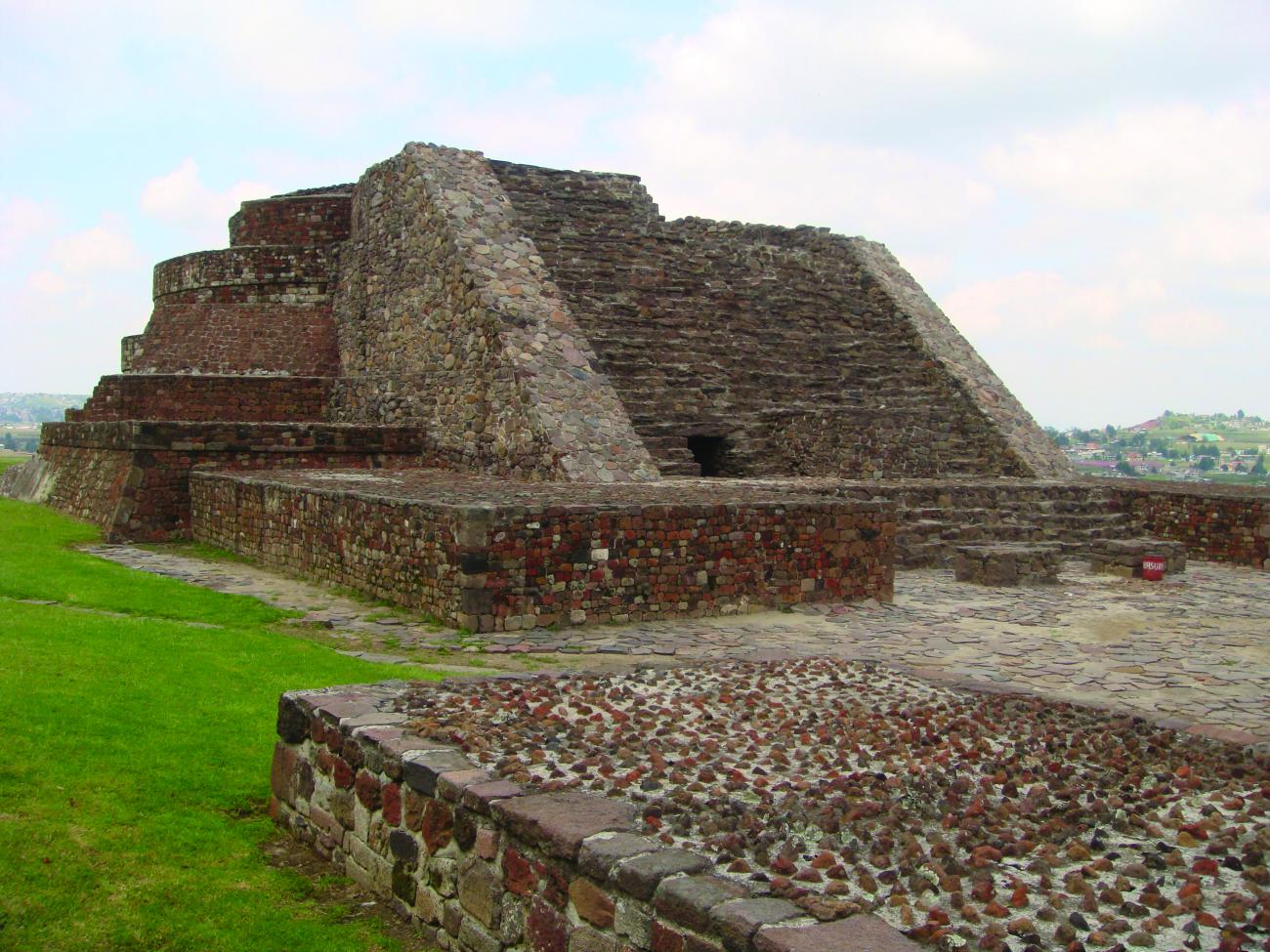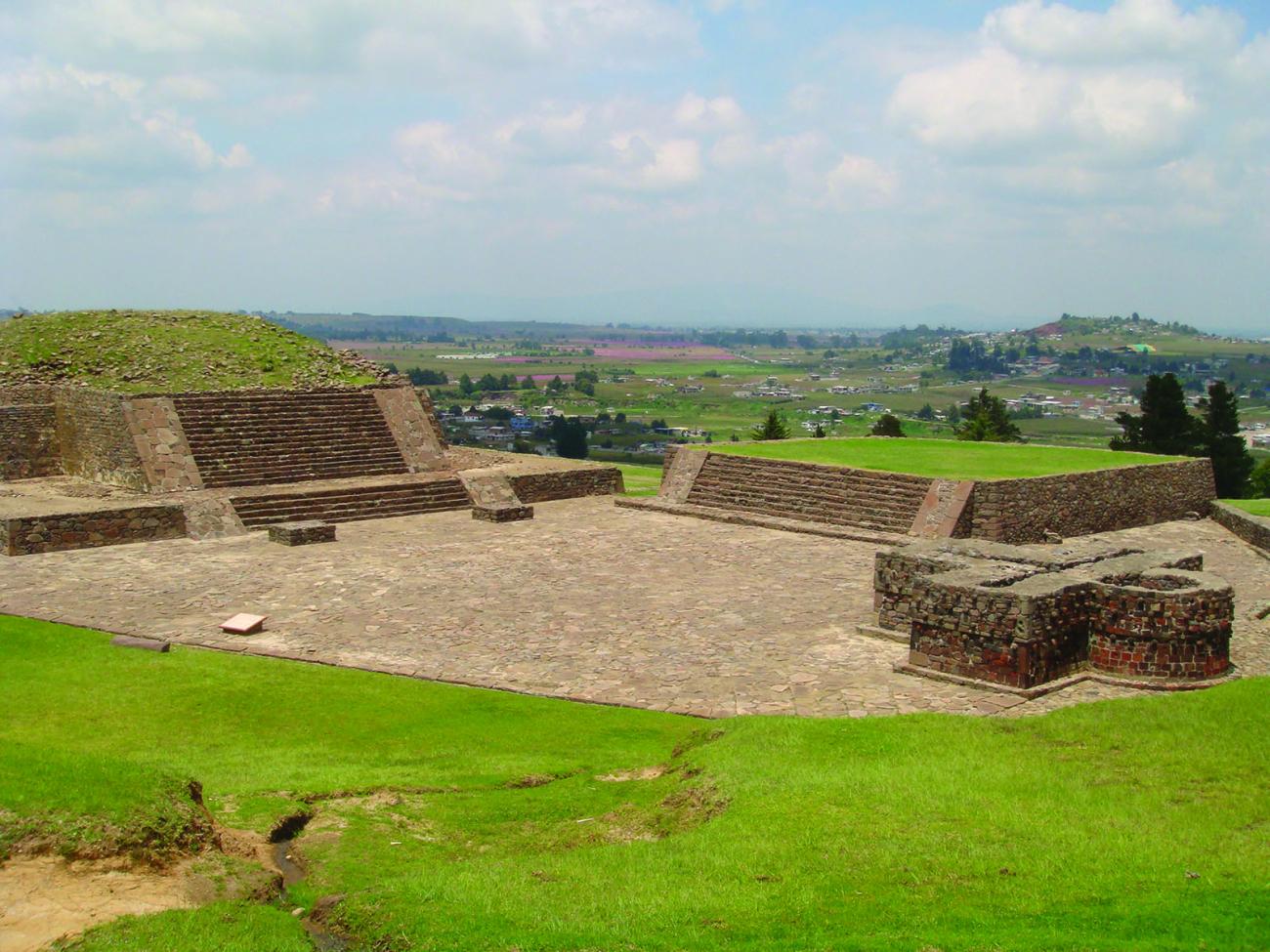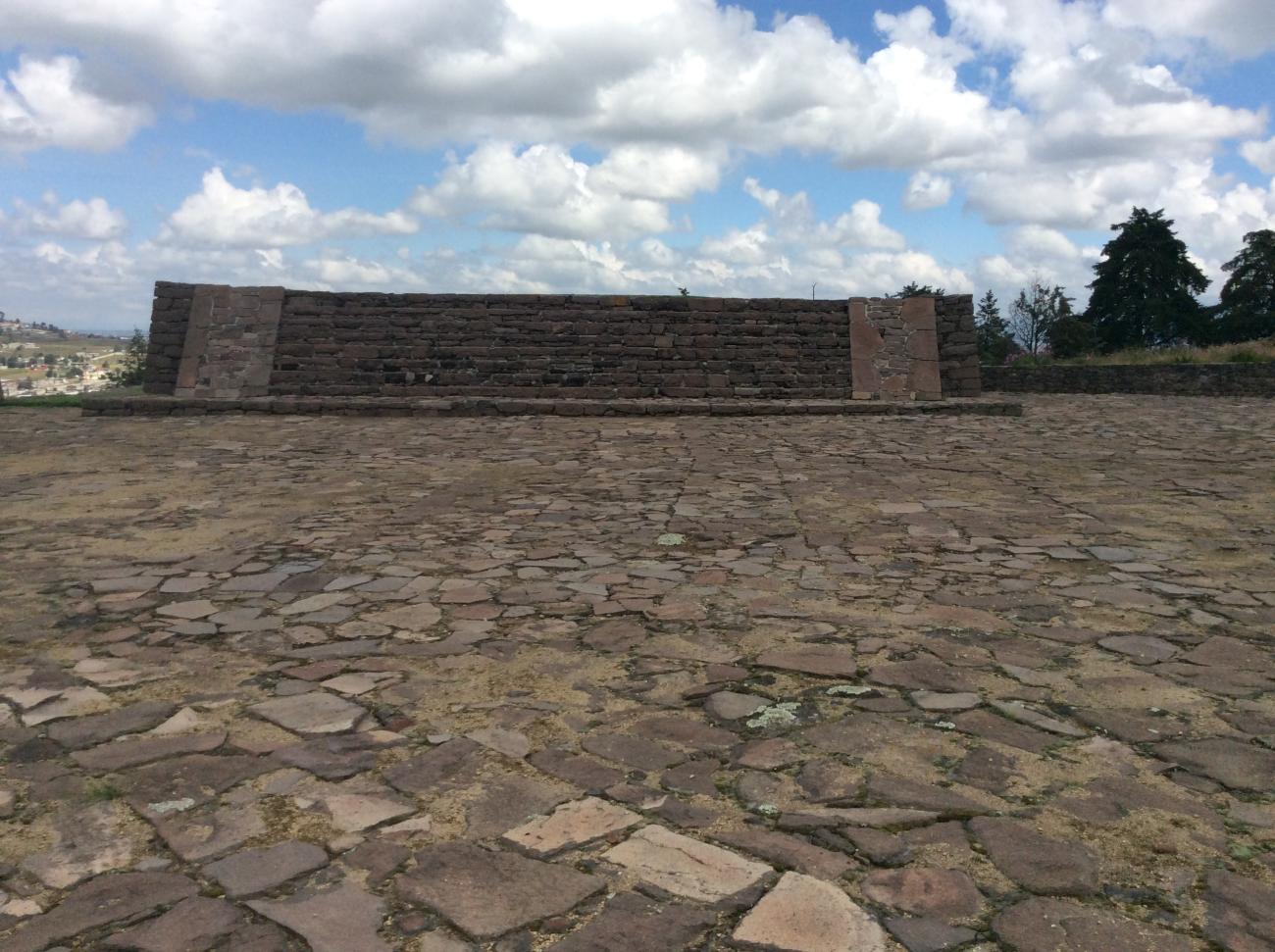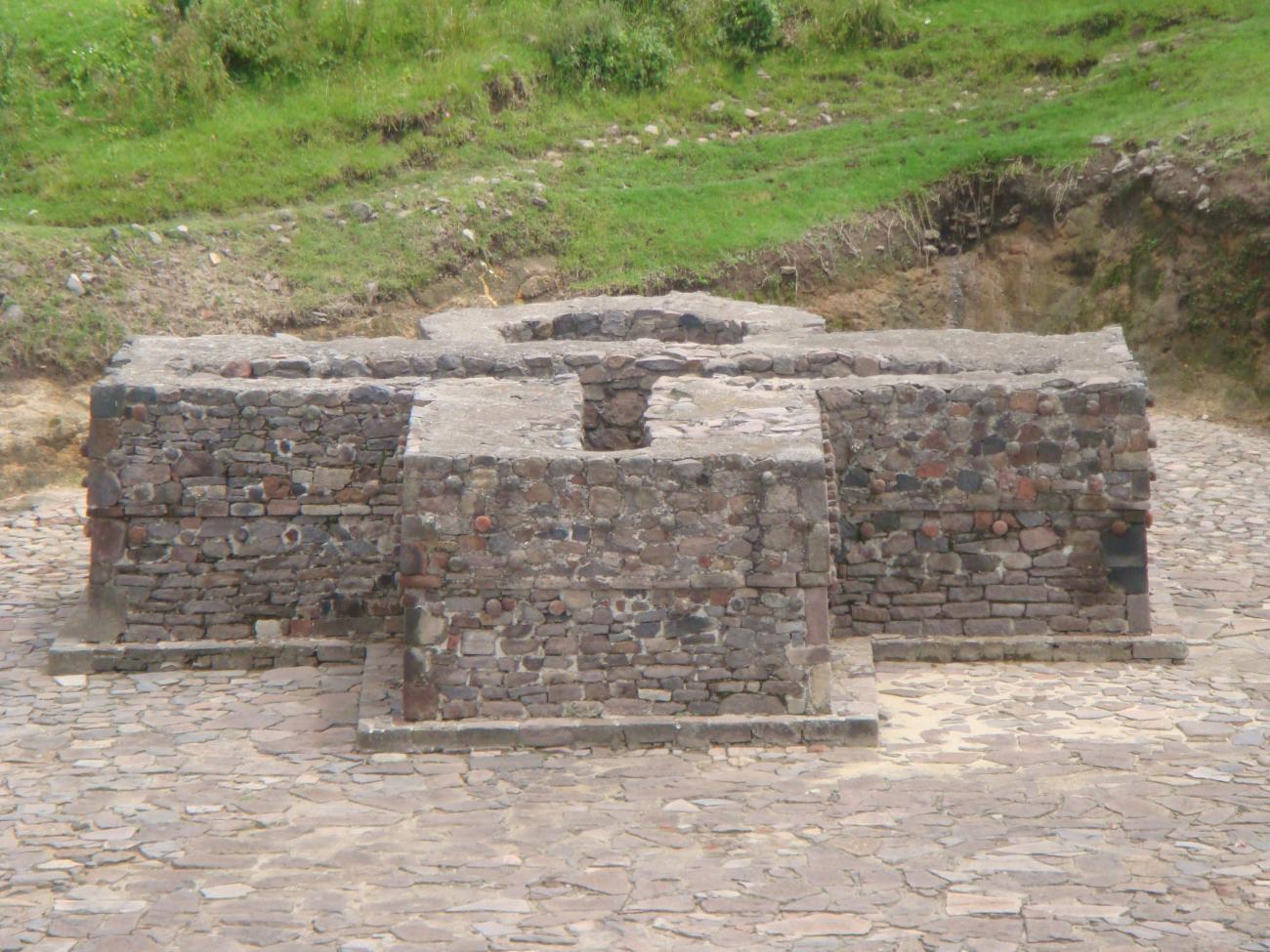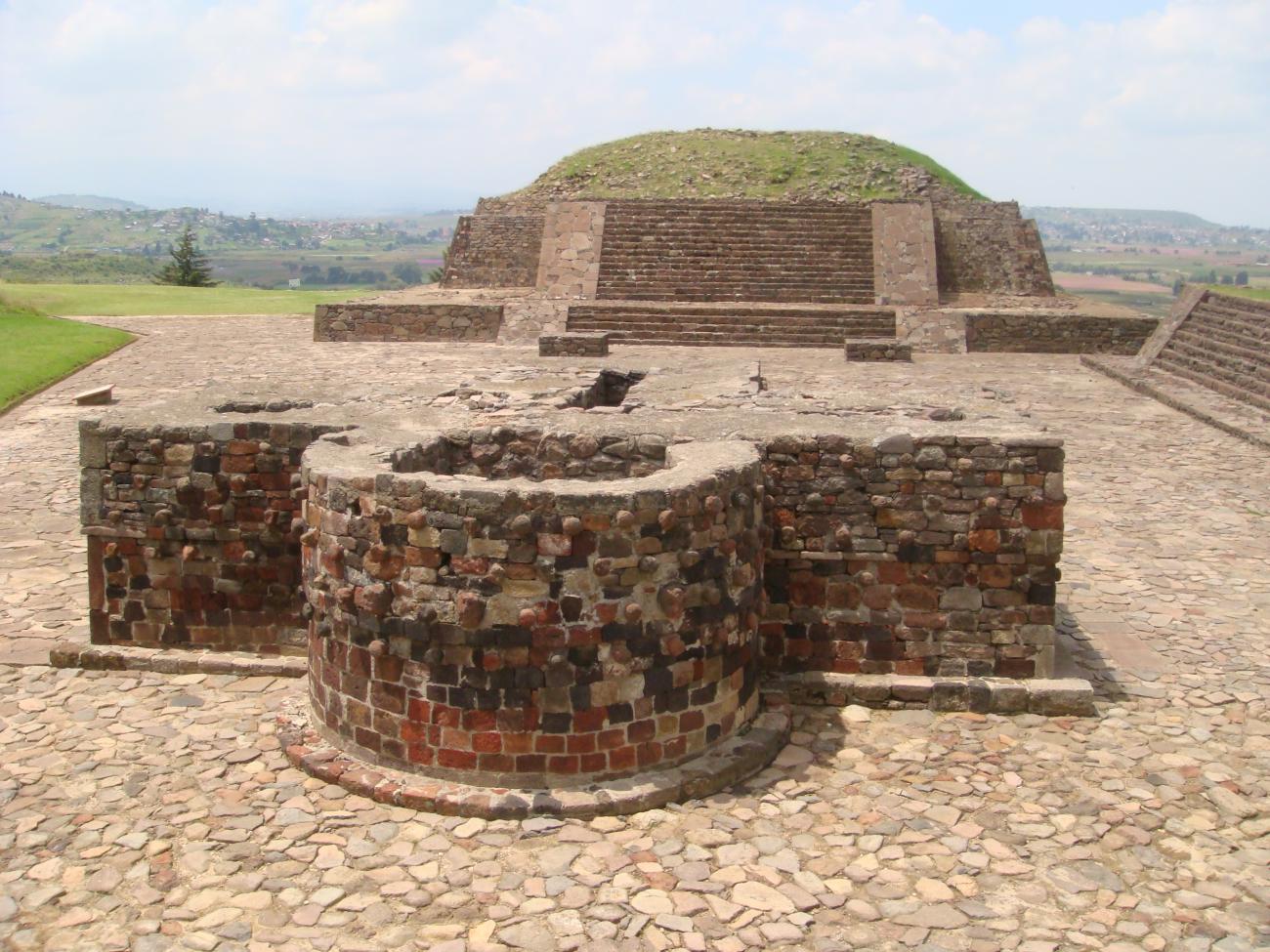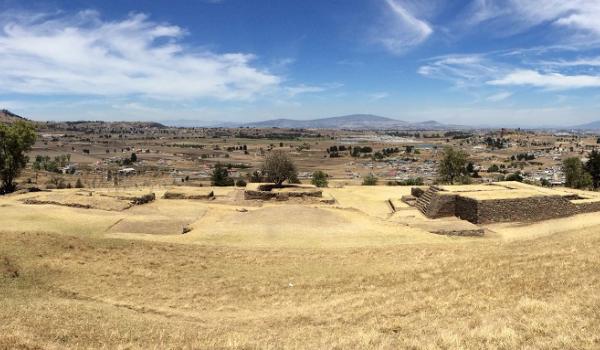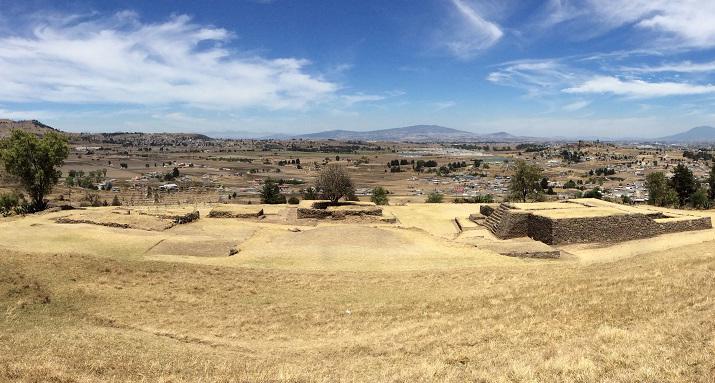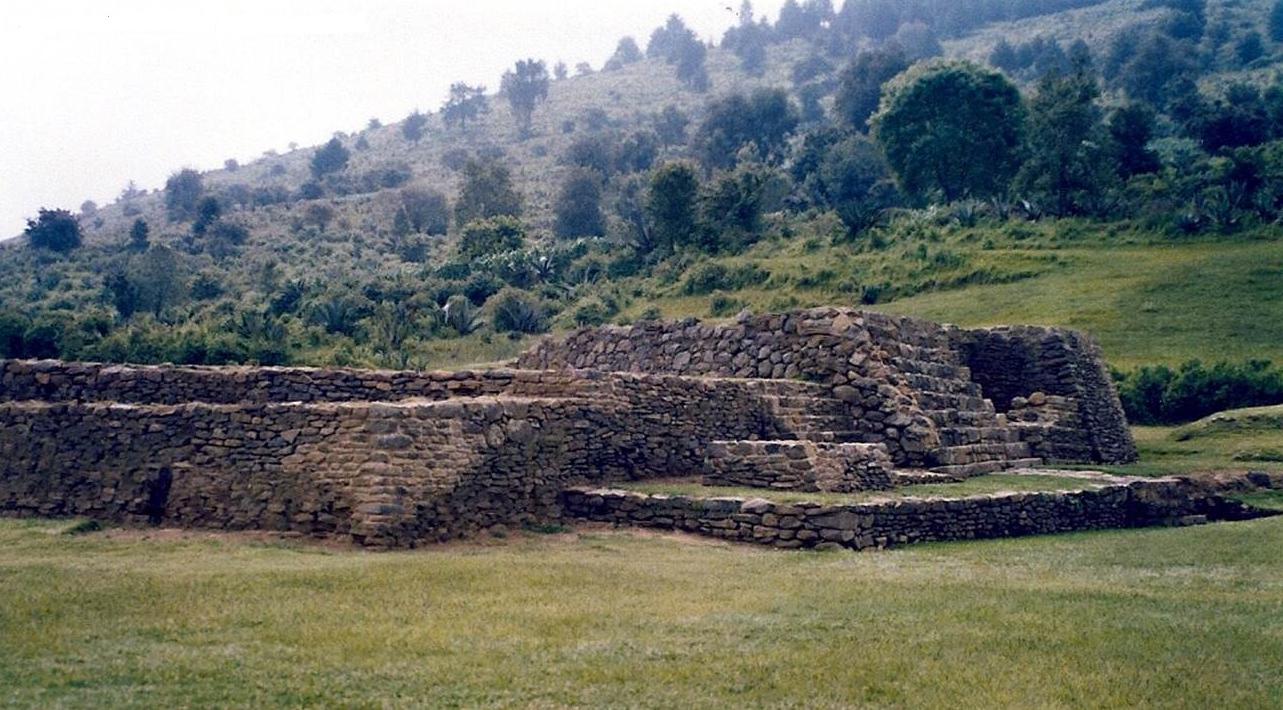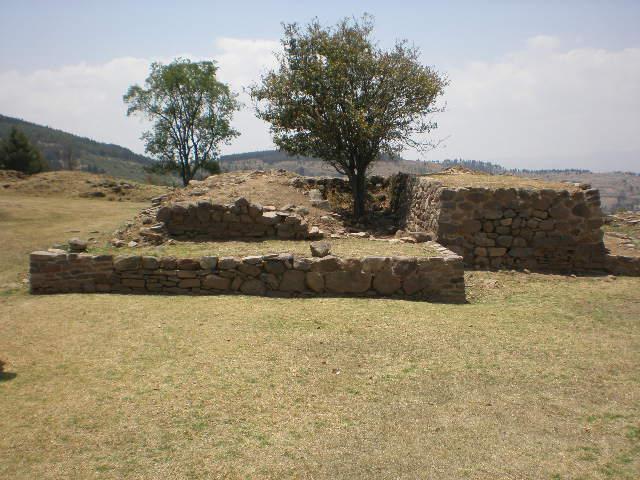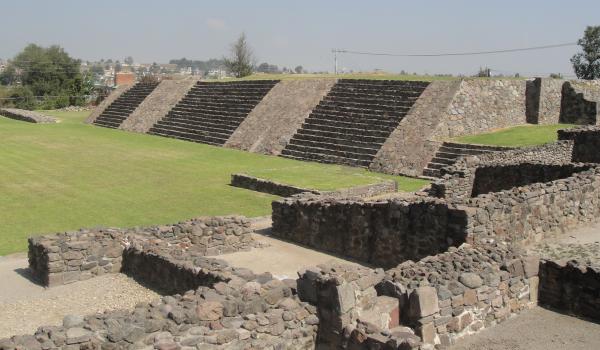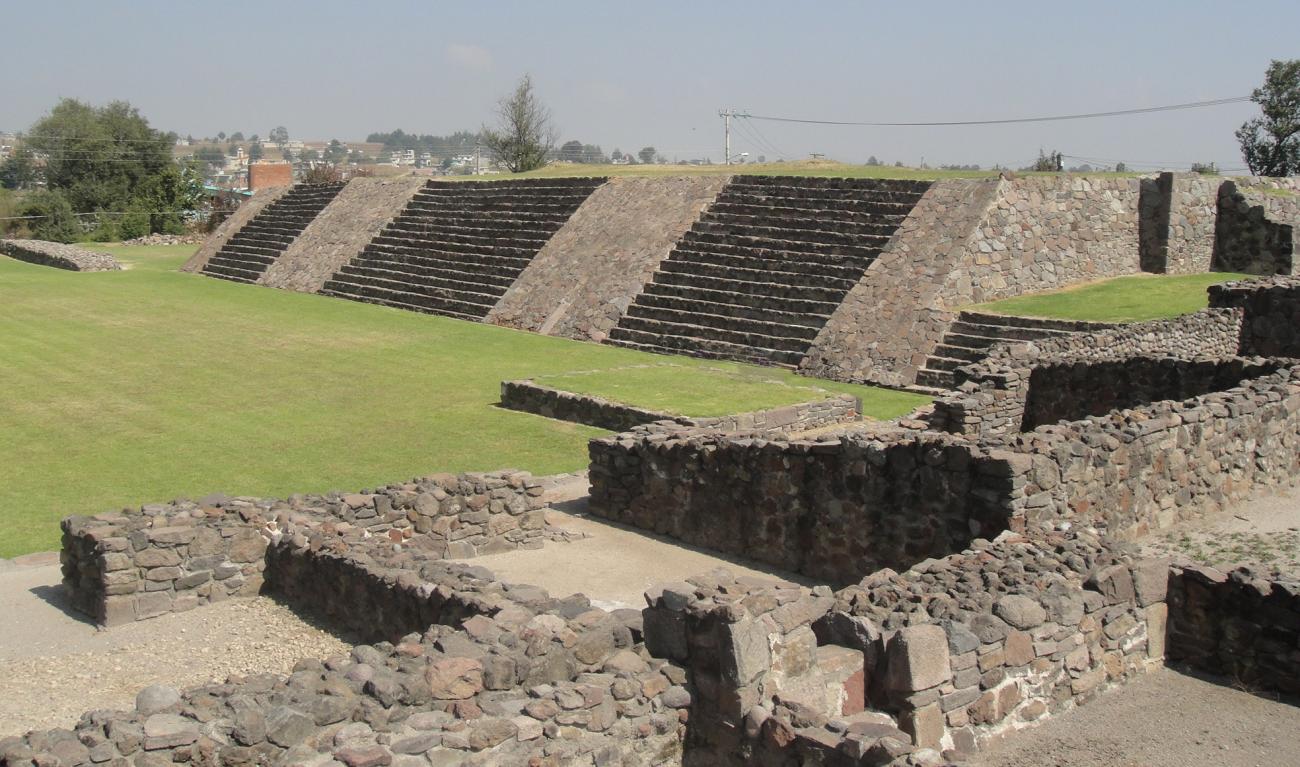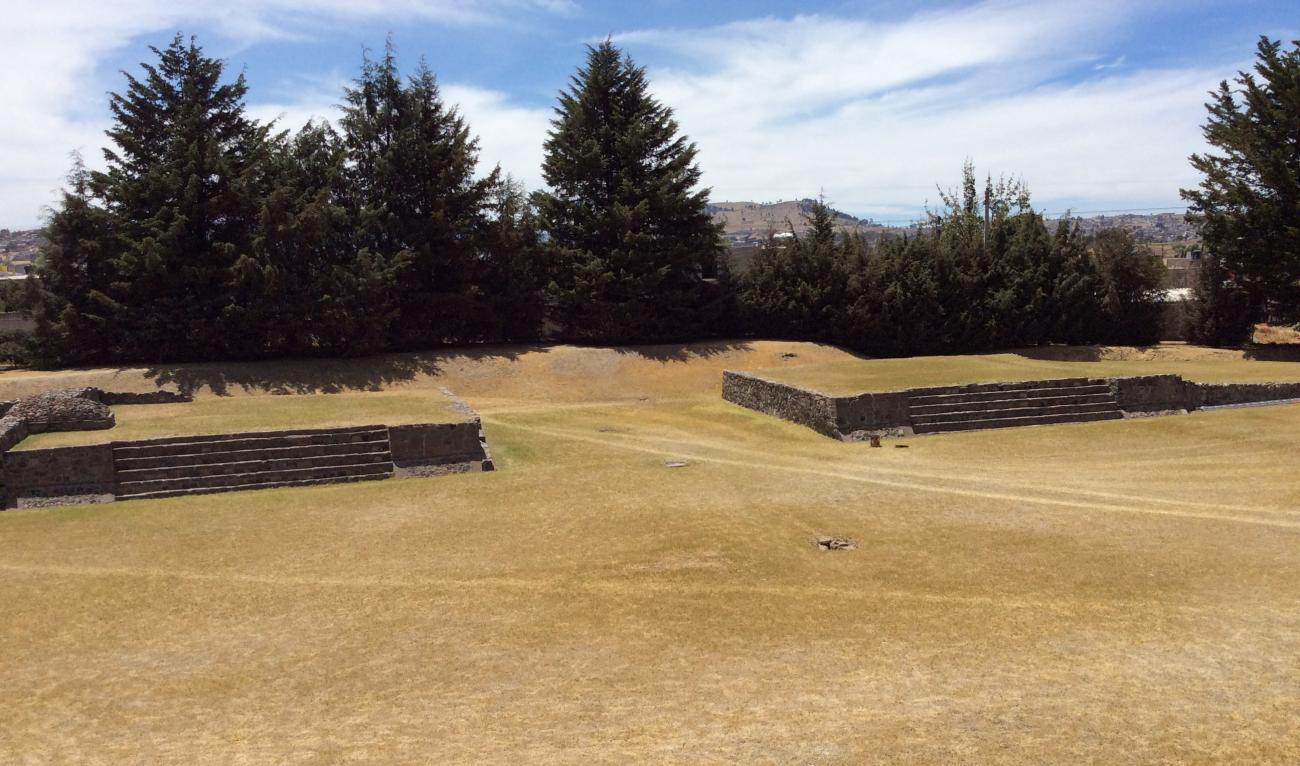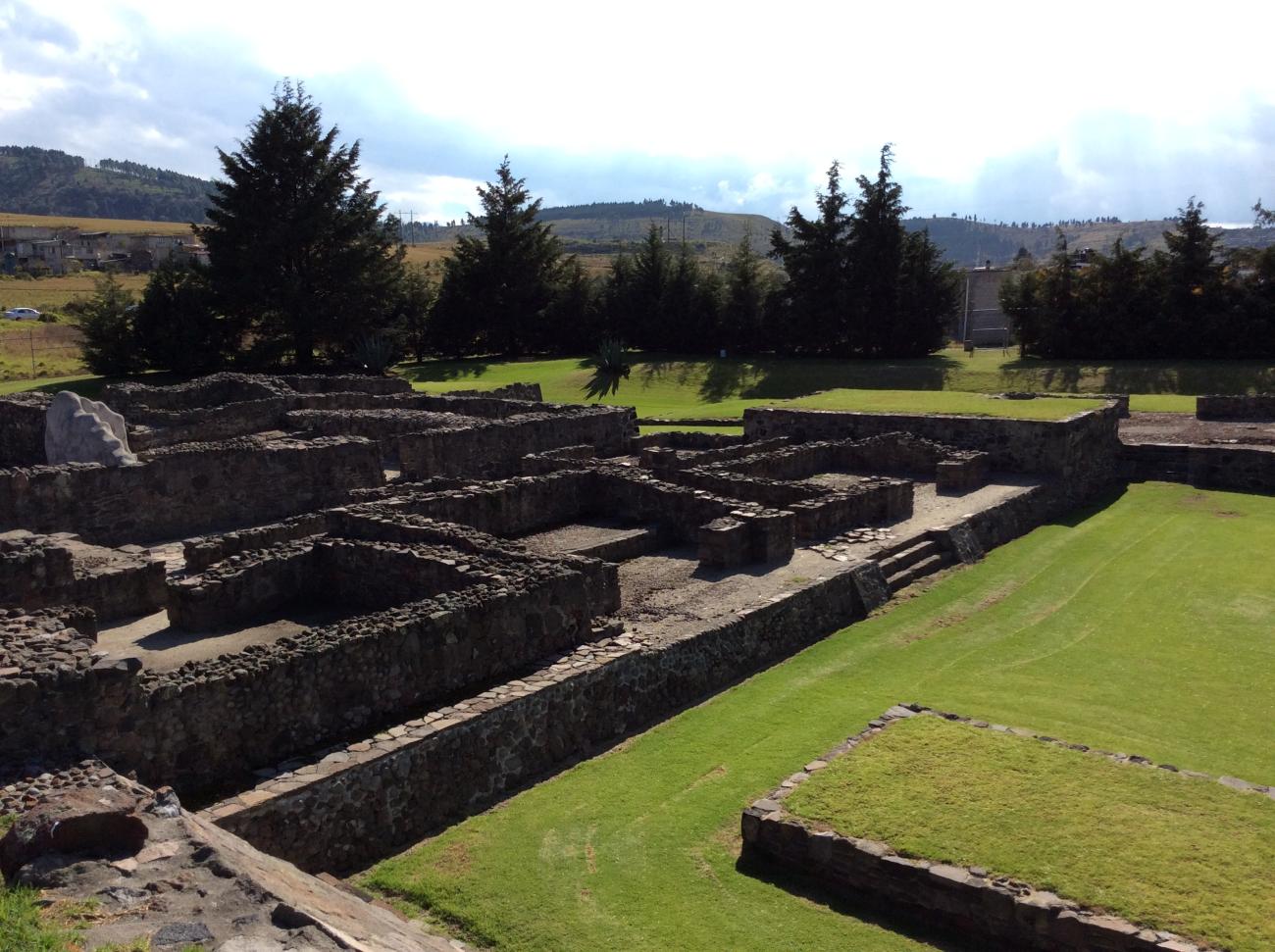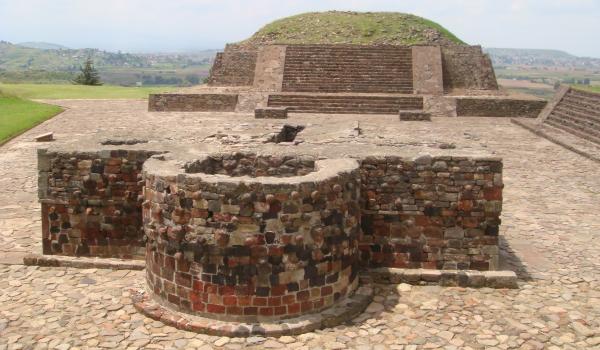Otomi, Teotihuacano, Toltec, Mazahua, Matlatzinca and Nahua groups settled in the Toluca Valley in pre-Hispanic times.
Olmec-influenced organized groups invaded in the Preclassic period (1000 BC to 150 AD). From 250 AD, the Teotihuacanos occupied the Toluca Valley and Calixtlahuaca, as well as other sites, owing to the diversity of resources they offered for subsistence. It was the Teotihuacanos who introduced customs and rites such as the Mesoamerican ballgame and the cult of Quetzalcóatl and Tláloc.
When Teotihuacan fell, there was a Toltec invasion of Calixtlahuaca. The Toltecs were then supplanted by the Matlatzincas, who called themselves the Nepinthathuhui (“those from the land of maize”). Their zenith lasted between 1116 and 1476.
Between 1472 to 1476, the Mexicas (together with Axayácatl and the Triple Alliance) conquered the Matlatzincas under the command of Moctezuma Xocoyotzin and imposed the payment of tribute, as shown in the Tribute Roll.
The Calixtlahuaca-San Marcos Archeological Monument Zone is distributed along a segment of Cerro Tenismó. Monuments 13, 14 and 15, which are not open to the public, are located on the hilltop. Monuments 5 and 6 (South and West monuments) stand halfway up the hillside. These form the group known as El Panteón ("The Cemetery"). Meanwhile, monuments 4 and 7, together with the tzompantli, make up the Tláloc group. Monuments 8, 9, 10 and 11 are not accessible to visitors. Finally, monuments 1 and 3 are located on the lower hillside, and groups 16 and 17 (Calmécac) are on the plain.
The building complexes located on the flank of Cerro Tenismó stand on terraces which were leveled out and then filled in and supported by thick retaining walls.
A tour of the monuments open to the public takes approximately two hours.


